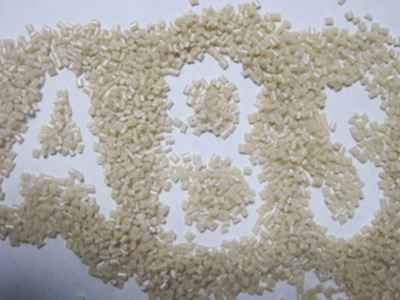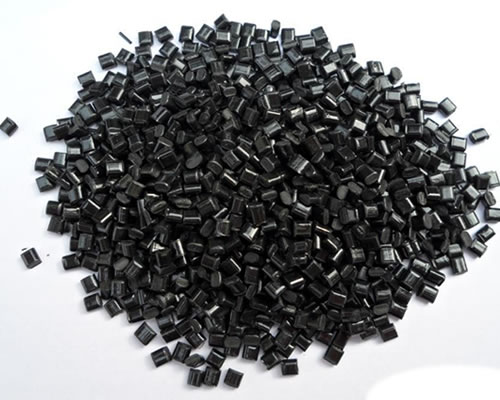
The ABS resin is a graft copolymer of three monomers of acrylonitrile, 1,3-butadiene, and styrene. Its molecular formula can be written as (C8H8•C4H6•C3H3N)x, but in practice it is often a mixture of a butadiene-containing graft copolymer and an acrylonitrile-styrene copolymer.

Among them, acrylonitrile accounts for 15%~35%, butadiene accounts for 5%~30%, styrene accounts for 40%~60%, plastic ABS has heat distortion temperature of 93~118°C, and products can be improved after annealing. °C or so. ABS can still exhibit a certain toughness at -40 ° C and can be used in the temperature range of -40 to 100 ° C. However, in some cases, the ambient temperature will be higher than 100 ° C. Therefore, in order to make the material meet the requirements of use, it is generally only to improve the heat resistance of ABS, thereby broadening its non-application field.
Why should we improve the heat resistance of ABS plastic? ABS has good processability and good toughness, but it has insufficient heat resistance, which limits its application range. In general, the ABS Vicat softening point is around 95 ° C, and the heat-resistant ABS (VST/B/50) exceeds 100 ° C. Therefore, it is necessary to increase the heat resistance of ABS to expand its application.
Especially in the automotive and electronic and electrical aspects, for automotive interior parts dashboards, toolboxes, ashtrays, new extrusion and other components; automotive exterior components, such as front grille, car base, painted mirror door panel components, wheels The hood, the spoiler, the gearbox cover, etc. all require good heat resistance.

In addition, in the electrical and electronic aspects, vacuum cleaner housings, microwave oven door frames, hair dryers, etc. also require ABS materials to have better heat resistance, in order to meet the material requirements of the parts, the specific requirements are as follows:
High stability in high temperature environments
High impact resistance
Excellent dimensional stability
Easy to process
Unbeatable surface
Low VOC
How to improve the heat resistance of ABS plastics? The heat resistance of plastics is generally defined as the measurement of how many characteristics are below normal temperature in high temperature environments. In general, high-molecular materials change the physical properties of materials because of the increased molecular motion, and the most obvious is elasticity. The most common way to improve the heat resistance of polymer materials is to inhibit molecular motion. Generally there are the following methods:
1. The molecular model of the polymer is framed into a three-dimensional structure to form a mesh, thereby suppressing molecular motion;
2. Add a difficult-to-operate aromatic ring and alicyclic structure to the molecular mechanism;
3. Add a polar group to the polymer to rely on the binding force of the hydroxide chain to inhibit the molecular structure;
4. Introduce a crystal structure into the polymer structure for heat-resistant modification, using a heat-resistant modifier.

Figure heat-resistant ABS particles
In general, ABS heat resistance can be improved by lowering the rubber content, increasing the SAN molecular weight and the acrylonitrile content, but the method of developing heat resistance and ABS by adding a heat resistant monomer or a heat resistant additive has been attracting more and more attention. Therefore, many well-known ABS plastics modification companies use heat-resistant modifiers to improve the heat resistance of ABS.
Good heat-resistant modifiers should meet these 8 requirements. At present, in addition to improving the heat resistance of ABS plastics, the problem of automotive VOCs is becoming more and more important. People hope that volatile organic solvents in heat-resistant ABS plastics can The lower the better. Therefore, the requirements for heat-resistant modifying auxiliaries have not only stayed in the demand for improving heat resistance, but also have requirements for reducing VOC. Therefore, in the future, the heat-resistant modification additives required by the modified plastics enterprises need to meet the following requirements:
High heat resistance (glass transition temperature = 175 ° C)
Better thermal stability
Good dimensional stability
Extremely easy to mix with ABS and SAN
Improve product surface adhesion
High liquidity
Good processing performance
Low VOC
What are the well-known ABS heat-resistant modifier suppliers? At present, the well-known ABS heat-resistant modifiers are Dutch Polyscope and Denka. In 2015, Polyscope in the Netherlands introduced a new low-odor ABS heat-resistant agent XIRAN®IZ1018M, which is favored by many well-known foreign plastics modification companies. This is related to the increasingly strict control of indoor VOCs in automobiles, and the trend of future heat-resistant ABS is necessarily low odor and low VOC.
Figure styrene-maleic anhydride-N-phenylmaleimide molecular structure
It is understood that in 2016 Shanghai Polyplastics Exhibition Netherlands Polyscope will introduce a higher heat resistance efficiency ABS heat-resistant agent, Tg is 197 ° C, VOC content is low. The following is a comparison of the effects of these two heat-resistant agents.
Table added 10% heat-resistant agent to improve the heat resistance of ABS

Ultra Plantâ„¢ Grow Light offers One Chip Technology aimed to meet your indoor growing expectation such as improve plants' quality, increase yield, or better the margin, etc., all for helping you realize a higher return on your crops.
Ultra Plantâ„¢ Grow Light is combined our advanced All-In-One technology with patented optical design and customized light full spectrum supported from our experienced LED engineers, plant specialists and other partners working on horticulture.
From Ultra Plantâ„¢ APP, you are able to schedule the growing process including photoperiod, brightness and spectral in advance. The lighting system will help you grow smarter, easier and better.
Ultra Plantâ„¢ is the most versatile horticultural grow lighting fixture for indoor plants with flexible full spectrum, brightness control and uniform, wider light distribution, suitable for top lighting of all types of crops. No matter it applies to anywhere for any crop, Ultra Plantâ„¢ can do perfect work for you.
450W Led Grow Light,Best Grow Light,Indoor Grow Lights,Indoor Grow Light
Feton Corporation , https://www.ultraplantleds.com